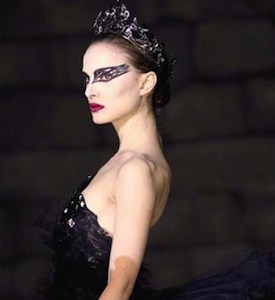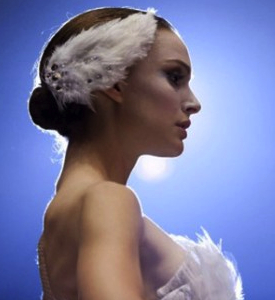One of my favorite things about cinema is finding analogies in movies that are applicable to the real world. In much the same way I relate to the characters I read about in books, I often notice themes and metaphors in films for patterns I see in my life. Disney princess films showed me the (sometimes admirable, sometimes flawed) standards that women are expected to live up to; movies like How to Train Your Dragon touch on such subjects as the hidden value in an awkward youth who doesn’t quite fit in (the tried and true zero-to-hero plot) and the open-mindedness to see the world in a new light; and even films like Avatar appeal to my biologist side for the often clichéd but still valid theme of how the natural world is mistreated by the human race in general.
One interesting example I’ve found of an analogy for my creative side is from the 2010 movie Black Swan, which seems to reflect two different sides of my writing: technique and emotion. Of course, to understand this comparison, one first needs to be familiar with the story…
Rise of the Black Swan
As many are surely aware, Black Swan is an award-winning psychological thriller film, directed by Darren Aronofsky and starring Natalie Portman, Vincent Cassel, and Mila Kunis. The movie tells the story of Nina Sayers, a ballet dancer who is up for the highly coveted lead role of the Swan Queen in her company’s upcoming production of Swan Lake. In the beginning of the movie, the director, Thomas Leroy, is looking for a dancer who can embody both sides of the ballet’s main character: the delicate, innocent White Swan; and her sensual “evil twin”, the Black Swan. Thomas assures Nina that her flawless technique makes her a perfect match for the White Swan, but she must learn to let go of her inhibitions and release her emotional side in order to embrace the passion of the Black Swan. Despite her poor audition, the director sees enough of a spark in her to cast her as the Swan Queen, though he continues pushing her to bring out the fire he glimpsed when she asked for the part. The pressure of living up to her role proves incredibly stressful for Nina, and she soon finds herself transforming from her innocent White Swan persona into the dark Black Swan as she tries so hard to be “perfect”.
What really intrigued me about this film was seeing the contrast between the two Swans in creating the character of the Swan Queen. Though here they represent opposing sides of Nina’s personality, I find that they prove to be a good analogy for any form of art, which often requires a decent balance between both: the technique of the White and the emotion of the Black. In fact, the first comparison I made between the movie and my real life was not about my writing, but my singing. Back when I used to take vocal lessons, I focused so much on achieving technical perfection that I found it difficult to emote, for fear of losing that ideal sound. It wasn’t until later that I realized how applicable the concept was to all my other experiences in art, including – and perhaps especially – creative writing.

Natalie Portman as the Black and the White Swan
(Image used with permission from @angellastrucci. Check out her Instagram page for more amazing drawings!)
From Black to White
 Interestingly, in contrast to Nina’s psychological breakdown, my own transformation seemed to happen backwards. Before I started seriously considering writing as a career, I wrote mostly for school assignments and my personal enjoyment, not really expecting to show my work to anyone. As a result of this, much of my earliest writing was carefree and uninhibited, but it was also rather sloppy. I think of this period as my “Black Swan” phase, when I poured my heart and soul into my words with hardly any regard for structure and refinement. For the preadolescent me, writing was all about emotion.
Interestingly, in contrast to Nina’s psychological breakdown, my own transformation seemed to happen backwards. Before I started seriously considering writing as a career, I wrote mostly for school assignments and my personal enjoyment, not really expecting to show my work to anyone. As a result of this, much of my earliest writing was carefree and uninhibited, but it was also rather sloppy. I think of this period as my “Black Swan” phase, when I poured my heart and soul into my words with hardly any regard for structure and refinement. For the preadolescent me, writing was all about emotion.
 As I grew older, however, my approach to creative writing began to change. I started to pay more attention to the technical aspect of my stories, focusing on details like grammatical coherence and proper structure instead of putting pure heart into my writing. It actually got to a point where I was so obsessed with writing “correctly” that I would often write dialogue in proper language even if it wasn’t in tone with the characters involved in the conversation. Because of this, my stories started to become mechanical, lacking the spontaneity that used to come across so easily in my earlier works. This was my “White Swan” phase, when technique came first and I only worried about the feeling behind the words later. My teenage self was a technical perfectionist.
As I grew older, however, my approach to creative writing began to change. I started to pay more attention to the technical aspect of my stories, focusing on details like grammatical coherence and proper structure instead of putting pure heart into my writing. It actually got to a point where I was so obsessed with writing “correctly” that I would often write dialogue in proper language even if it wasn’t in tone with the characters involved in the conversation. Because of this, my stories started to become mechanical, lacking the spontaneity that used to come across so easily in my earlier works. This was my “White Swan” phase, when technique came first and I only worried about the feeling behind the words later. My teenage self was a technical perfectionist.
The Swan Queen
As you can imagine, neither of these approaches alone was ideal for my creative writing. Too much emotion without technique made my stories seem juvenile and amateurish, while too much technique without emotion made them stiff and a little flat. I needed to learn how to touch on both sides in order to balance my stories. In other words, I needed to learn how to play the Swan Queen.
So that’s the goal I’ve been trying to reach in my writing: balance between these two complementary elements. I still see much of the White Swan’s technique in my work, but I’m continuing to let more of the Black Swan’s emotion back into my words, in the hope of achieving the equilibrium that will make me a better writer. In a similar (albeit healthier) way that Nina strives to fully embody her character, an artist should strive to draw from both Swans and embrace the metaphorical role of the Swan Queen.
What about you? Do you see more of the Black Swan or the White Swan in your own art? Have you managed to tame the Swan Queen (or King) in you?


I think my experience has been very much like yours. Initially, it was all emotion. In college I took several creative writing courses that really helped me learn about my technique and how to refine it. Now I spin on both ends, never quite balancing in the middle—it only seems to come to a good balance with my best stories.
It also is a much different lens with novels, short stories, and poetry—each is very different for me. My writing with poetry tends to be very emotional and not focused on grammar (luckily I naturally have a good eye for it), but instead focused on flow, and the way the poem sounds in my mind. Novels and short stories are much more technique oriented. I write outlines. I’m focused on making sure that all of the info I need to include is there, etc. etc. The initial draft is a little less technical, of course. 😉
Anyway, great post!
Thank you! I totally get how different formats bring out different sides of our creativity. Stories are indeed heavily focused on technique, but it’s much easier to put emotion into poetry (where structure is not as important). Since I’ve spent more time in my life as a “White Swan”, technique comes more naturally to me, but I think writing exercises and even blogging are helping me bring back the “Black Swan”. Balance is difficult, but when we achieve it, we turn out some of our best work! 😉
The Black Swan is my personal favorite. Though I’ve always found that if technique is lacking, then it can become a distraction and take away from the story, so a good balance is always ideal! 🙂 I agree that our best work is our most balanced.
Fantastic analogy and one to which I can relate. Finding the balance is hard and depends on the story. Always striving!
True, balance is very tricky, especially when you write different types of stories that lean more toward one side or the other. It’s a challenge, but worth the effort! Thanks for reading! 🙂
Great essay. It’s certainly an important balance to get right, and I think that every piece you write you have to regain that balance again. One day the Black Swan will wriggle out onto the page, the next day, the White Swan might reign supreme.
Thanks! I get that feeling too; when one side is stronger than the other, it gets tricky to find the balance. I guess in that way, stories can be like their own individual productions of “Swan Lake”: there are times for the White Swan to perform, and others for the Black Swan to take the spotlight!